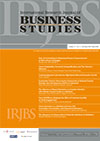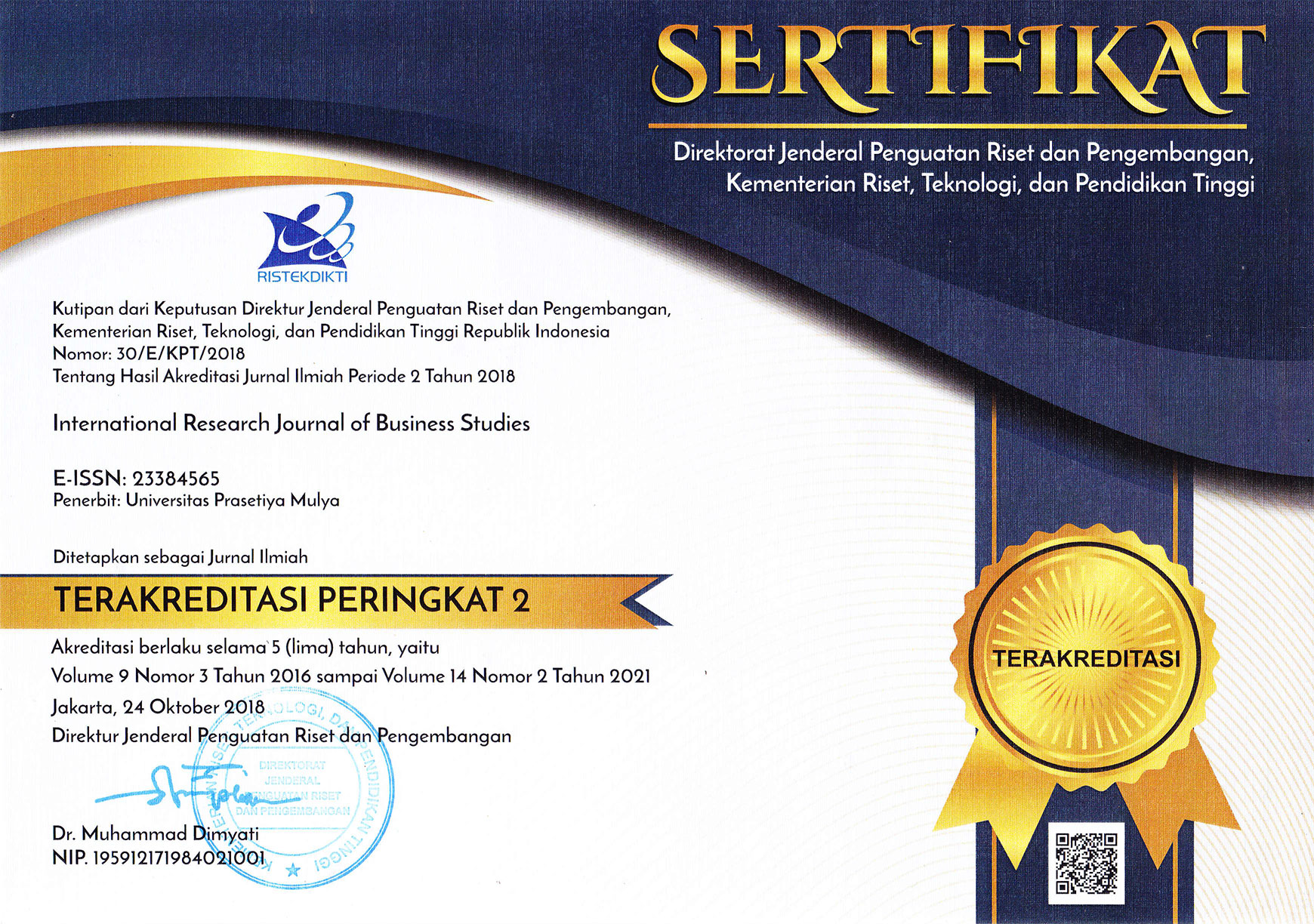Strategic Public Relations for Strengthening Public Trust in Government
DOI:
https://doi.org/10.21632/irjbs.18.1.43-51Keywords:
public relations, public trust, public service, public sectorAbstract
This study examines the role of public relations in building public trust in Indonesia's public sector. Using the PRISMA-based Systematic Literature Review (SLR) method, the findings indicate that strategic communication and transparency play a crucial role in shaping a positive governmental image. Digital innovations, such as online complaint platforms, enhance transparency and public engagement. Theoretically, this study reinforces the concept of public relations as a strategic tool for strengthening government legitimacy. Moreover, the findings have managerial implications, recommending a more transparent and participatory communication strategy to foster public trust and improve the effectiveness of government policies.
References
Aghazadeh, S. A. (2024). Exploring leisure and municipal government public relations for community: A case example of parks and recreation. Public Relations Review.
Alessandro, M., et al, (2021). Transparency and Trust in Government. Evidence from a Survey Experiment. World Development, Elsevier, vol. 138(C).https://doi.org/10.1016/j.worlddev.2020.105223.
Alkathiri, E. S., & Alharbi, M. F. (2024). A scoping review of arab public relations scholarship. Public Relations Review.
Almuqrin, A., & Mutambik, I. (2022). Factors Influencing Public trust in Open Government Data. Sustainability.
Aoki, N. (2020). An experimental study of public trust in AI chatbots in the public sector. An experimental study of public trust in AI chatbots in the public sector.
Apriliani, R., & Purworini, D. (2023). Public Relations Efforts in Disaster Communication to Build Public trust. 5th International Conference of Geography and Disaster Management. Surakarta: Earth and Environmental Science.
Bazarah, J., & Pujiastuti, N. (2022). Concept of Public Service in Indonesia (Literacy Analysis of Public Service Implementation in Indonesia). Budapest Internasional Research and Critics Institute-Journal (BIRCI-Journal).
Brunk, C. G. (2006). Public Knowledge, Public trust: Understanding the ‘Knowledge Deficit’. Community Genetics.
Chanley, V. A., & Rudolph, T. J. (2000). The Origins and Consequences of Public trust in Government: A Time Series Analysis. Public Opinion Quarterly.
Fadillah, D., & Huiquan, Z. (2024). Developing public relations as a foundation for public trust: a systematic literature review and bibliometric analysis. Social Sciences.
Fage-Butler, A., & Ledderer, L. (2022). Public trust and mistrust of climate science: A meta-narrative review. Public Understanding of Science.
Fiona Simpson, E. A. (2010). A systematic review of techniques and interventions for improving adherence to inclusion and exclusion criteria during enrolment into randomised controlled trials. Trials.
Gole, P. A. (2024). Dimensions of Corporate Governance in Public Relations Literature: A Systematic Review. NAŠE GOSPODARSTVO / OUR ECONOMY.
Guo, C., Hu, X., Yuan, D. et al. (2022) Dampak COVID-19 terhadap kepercayaan publik terhadap Organisasi Kesehatan Dunia: eksperimen alami di antara 40 negara. Global Health 18 , 77. https://doi.org/10.1186/s12992-022- 00872-y
Gozgor, G. (2022). Global Evidence on the Determinants of Public trust in Governments during the COVID-19. Applied Research in Quality of Life.
Haddaway, N. R., Collins, A. M., Coughlin, D., & Kirk, S. (2015). The Role of Google Scholar in Evidence Reviews and Its Applicability to Grey Literature Searching. PloS one, 10(9), e0138237. https://doi.org/10.1371/journal.pone.0138237
Halma, M. T., & Guetzkow, J. (2023). Public Health Needs the. Public trust: A Pandemic Retrospective. BioMed.
Hartley, K., & Aldag, A. (2024). Public trust and support for government technology: Survey insights about Singapore’s smart city policies. Public trust and support for government technology.
Irawanto, et al. The Role of Public Relations in Disseminating Government Programs Through Social Media. East Asian Journal of Multidisciplinary Research, vol. 1, no. 5, 28 Jun. 2022, pp. 883-900, doi:10.55927/eajmr.v1i5.518.
Kinder, T., & Stenvall, J. (2023). Local public services and the ethical deployment of artificial intelligence. Government Information Quarterly.
Lame, G. (2019). Systematic Literature Reviews: An Introduction. Proceedings of the Design Society: International Conference on Engineering Design.
Larsson, L. (2007). Public trust in the PR industry and its actors. Journal of Communication Management.
Liu, N., Bao, G., & Wu, S. (2023). Social implications of Covid- 19: Its impact on general trust, political trust, and trust in physicians in China. Social science & medicine (1982), 317, 115629. https://doi.org/10.1016/j.socscimed.2022.115629.
Majid, U., & Wasim, A. (2021). Public trust in governments, health care providers, and themedia during pandemics: A systematic review. JOURNAL OF TRUST RESEARCH.
Downloads
Submitted
Accepted
Published
How to Cite
License
Copyright (c) 2025 Agus Kurniawan, Suparto Wijoyo (Author)

This work is licensed under a Creative Commons Attribution-ShareAlike 4.0 International License.
Journal Author(s) Rights
For IRJBS to publish and disseminate research articles, we need publishing rights (transferred from the author(s) to the publisher). This is determined by a publishing agreement between the Author(s) and IRJBS. This agreement deals with the transfer or license of the copyright of publishing to IRJBS, while Authors still retain significant rights to use and share their own published articles. IRJBS supports the need for authors to share, disseminate and maximize the impact of their research and these rights, in any databases.
As a journal Author, you have rights to many uses of your article, including use by your employing institute or company. These Author rights can be exercised without the need to obtain specific permission. Authors publishing in IRJBS journals have comprehensive rights to use their works for teaching and scholarly purposes without needing to seek permission, including:
- use for classroom teaching by Author or Author's institution and presentation at a meeting or conference and distributing copies to attendees;
- use for internal training by the author's company;
- distribution to colleagues for their research use;
- use in a subsequent compilation of the author's works;
- inclusion in a thesis or dissertation;
- reuse of portions or extracts from the article in other works (with full acknowledgment of the final article);
- preparation of derivative works (other than commercial purposes) (with full acknowledgment of the final article);
- voluntary posting on open websites operated by the author or the author’s institution for scholarly purposes,
(But it should follow the open access license of Creative Common CC-by-SA License).
Authors/Readers/Third Parties can copy and redistribute the material in any medium or format, as well as remix, transform, and build upon the material for any purpose, even commercially. Still, they must give appropriate credit (the name of the creator and attribution parties (authors' detail information), a copyright notice, an open access license notice, a disclaimer notice, and a link to the material), provide a link to the license, and indicate if changes were made (Publisher indicates the modification of the material (if any) and retain an indication of previous modifications.
Authors/Readers/Third Parties can read, print and download, redistribute or republish the article (e.g. display in a repository), translate the article, download for text and data mining purposes, reuse portions or extracts from the article in other works, sell or re-use for commercial purposes, remix, transform, or build upon the material, they must distribute their contributions under the same license as the original Creative Commons Attribution-ShareAlike (CC BY-SA).
This work is licensed under a Creative Commons Attribution-ShareAlike 4.0 International License.








